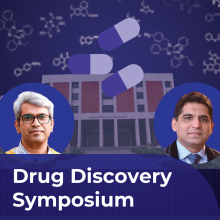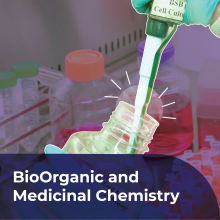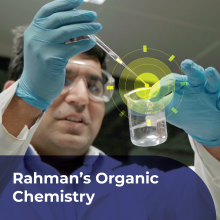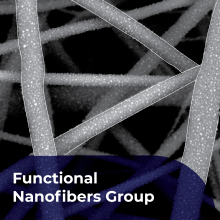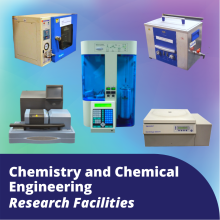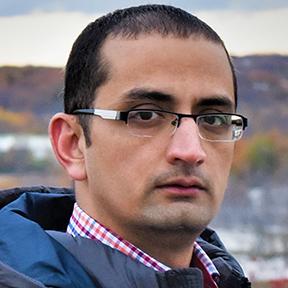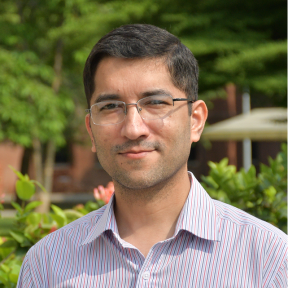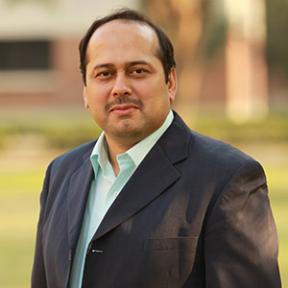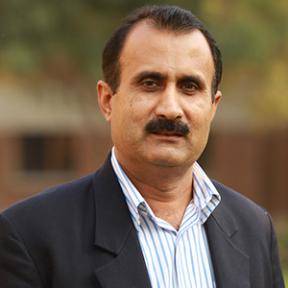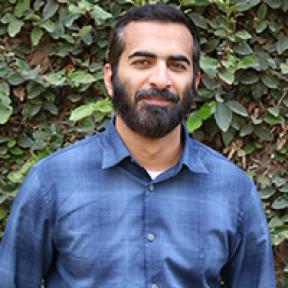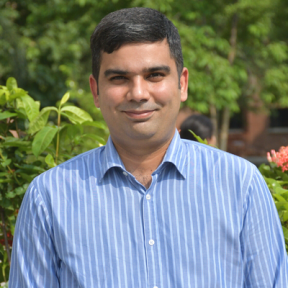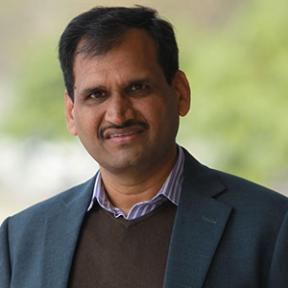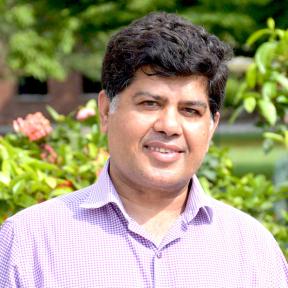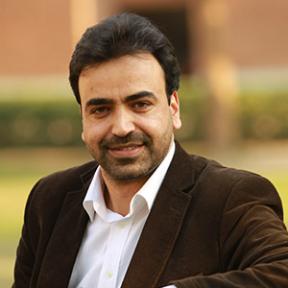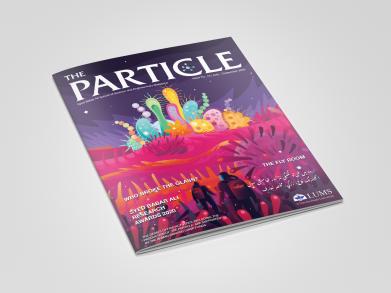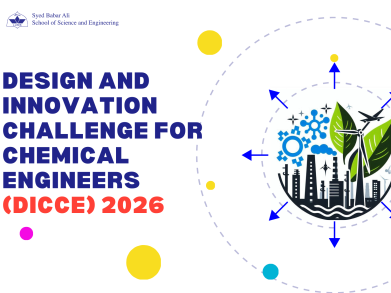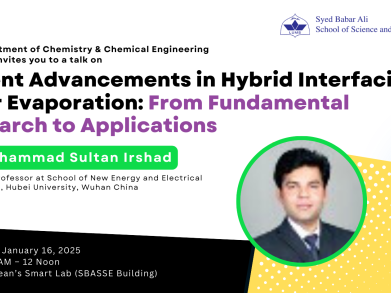The Department of Chemistry and Chemical Engineering provides an outstanding environment to learn chemical sciences as an integrated subject that is not divided by traditional boundaries. We have state-of-the-art teaching and research facilities. Our experienced faculty strives to be at the forefront of research in their respective fields. Our ethos is to produce world-class & socially responsible individuals by providing them with an excellent academic environment that combines unique curriculum, cutting-edge research, scholarship and service to the society.
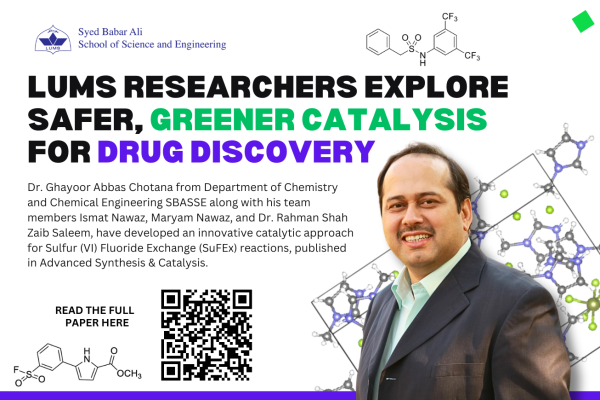
Sulfonamides are vital components in many pharmaceuticals and…
Sulfonamides are vital components in many pharmaceuticals and agrochemicals, yet traditional synthesis methods face challenges due to instability and harsh reaction conditions. In response, Dr. Ghayoor Abbas Chotana from Department of Chemistry and Chemical Engineering SBASSE along with his team members Ismat Nawaz, Maryam Nawaz, and Dr. Rahman Shah Zaib Saleem, have developed an innovative catalytic approach for Sulfur (VI) Fluoride Exchange (SuFEx) reactions, published in Advanced Synthesis & Catalysis.
Using affordable organic bases and leveraging the unexpected role of glass reaction vessels, the team’s method simplifies sulfonamide synthesis while adhering to green chemistry principles. This breakthrough enables safer, more efficient production of sulfonamides for drug discovery and highlights how everyday materials like glass can influence chemical reactions.
Read Full Paper here.
The work reflects LUMS’ commitment to advancing science and sustainability, contributing to global innovation in chemistry.
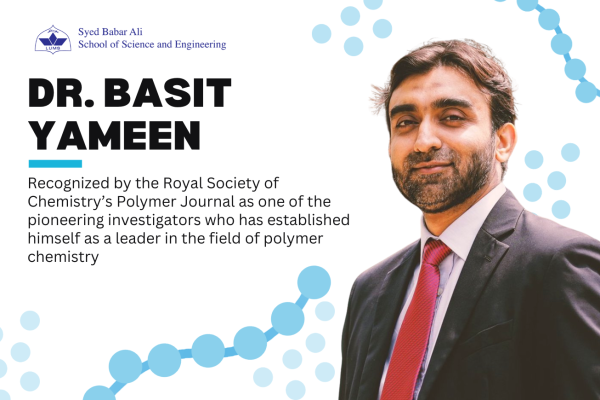
Dr. Basit Yameen, from the Department of Chemistry, has made…
Dr. Basit Yameen, from the Department of Chemistry, has made remarkable contributions to the field of polymer chemistry over the years. In 2014-15, he was recognized as an Emerging Investigator by the Royal Society of Chemistry’s Polymer Chemistry journal. Now, nearly a decade later, he has been honored once again, this time being identified and recommended by the journal’s editorial and advisory boards as one of the Pioneering Investigators who have firmly established themselves as pioneers of the field of polymer chemistry. This prestigious recognition celebrates Dr. Yameen’s lasting and impactful contributions to the advancement of polymer science, further solidifying his position as a leading figure in the field.
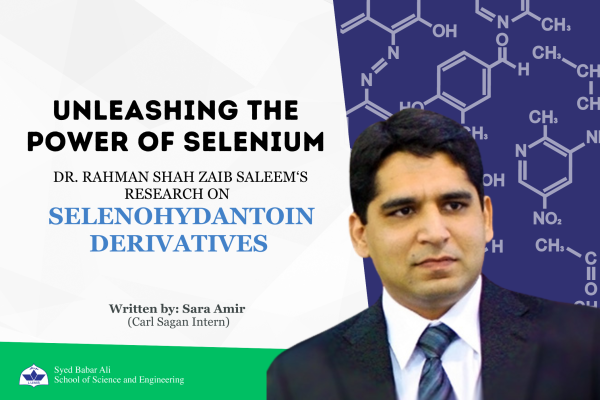
Selenium is a vital trace element that plays a crucial role in our…
Selenium is a vital trace element that plays a crucial role in our health, influencing various biochemical pathways due to its antioxidant properties. In nature, it often finds its way to our plates through foods like tuna, enriching our bodies with its antioxidant prowess.
The intricate relationship between Selenium and antioxidant properties has been extensively studied by researchers in the field, including Dr. Rahman Shah Zaib Saleem from the Department of Chemistry and Chemical Engineering at SBASSE, who is one of the contributors to a paper on Selenium derivatives. The paper was published after Dr. Rahman’s DAAD (Deutscher Akademischer Austauschdienst) scholarship visit to Germany in 2019 in collaboration with eleven international researchers, including Dr Rama Alhasan, Dr. Guilherme M. Martins, Dr. Pedro P. de Castro, Dr. Claus Jacob.
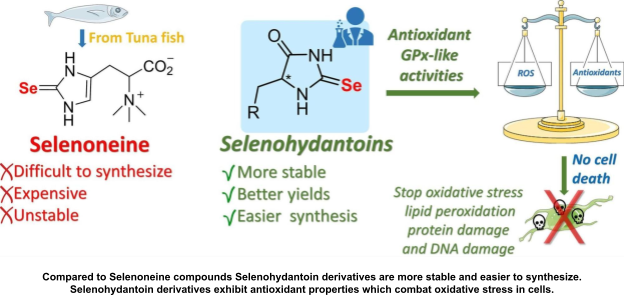
Selenium, acting as an antioxidant powerhouse, takes center stage in this study. Nature carries very few selenium containing organic compounds, Selenoneine being one of those. In this work, the team has worked on the preparation of novel organoselenium compounds. The research zeroes in on Selenohydantoin derivatives, synthetic compounds inspired by Selenoneine. These derivatives, with their fascinating range of pharmacological applications, hold the potential to serve not just as antioxidants but as versatile agents with capabilities spanning anti-inflammatory, anticancer, and antiplatelet realms. Through Selenocysteine enzymes like Glutathione Peroxidase, it acts as a powerful defender, effectively reducing peroxides to explore their potential in combating oxidative stress, a state where an imbalance occurs between the production of free radicals and the body's ability to neutralize them.
Using a unique synthetic method, the researchers synthesized Selenohydantoin molecules, paving the way for a comprehensive evaluation of their antioxidant capabilities. The study employed classical radical scavenging and metal-reducing techniques to unravel the true potential of these synthetic compounds. Cytocompatibility assays demonstrated that the Selenohydantoin derivatives were not only effective antioxidants but also non-toxic to primary human aortic smooth muscle cells. Cytocompatibility refers to the compatibility of a substance with living cells, ensuring that these compounds do not harm or disrupt normal cell function, a promising aspect for further biological evaluations.
Among the synthesized compounds, those adorned with trifluoro-methyl (-CF3) and chlorine (-Cl) substituents emerged as molecules displaying noteworthy antioxidant activities. Dr. Rahman's work highlights these compounds as potential candidates for future biological studies, offering hope for innovative therapies against chronic diseases. This research focuses not only on synthetic compounds but also on the broader context of organoselenium compounds in living organisms. Looking into the future a larger picture emerges - synthesis of Selenium-based compounds could play a crucial role in developing novel and effective prevention and treatments for diseases such as cancer, cardiovascular diseases, cystic fibrosis and rheumatoid arthritis.
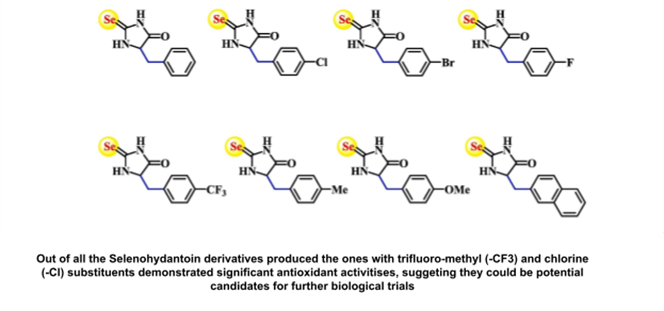
Dr. Rahman has recently been honored with another DAAD (Deutscher Akademischer Austauschdienst) scholarship grant by the German Academic Exchange Service. Through the scholarship Dr. Rahman and his research team will delve into the study of various signaling proteins and kinases, with a particular focus on the innovative molecule known as Proteolysis Targeting Chimeras (PROTACs). To learn more about Dr. Saleem's cutting-edge research and the potential impact of PROTACs on cancer treatment, follow this link.

“We sympathise with all the families who have suffered the loss of a…
“We sympathise with all the families who have suffered the loss of a child,” expressed a spokesperson from Sanofi Pasteur, the French multinational pharmaceutical company, upon the deaths of school-age children in the Philippines after being administered Sanofi’s dengue virus vaccine, Dengvaxia. Notably, no deaths had been reported during more than a decade-long clinical trials of the world’s first dengue vaccine. However, in November 2017, Sanofi disclosed that Dengvaxia “might increase the risk of severe disease in people who had never been exposed to the virus.
Despite extensive efforts, current dengue prevention strategies, including vaccinations, have significant limitations, leaving no specific treatment for dengue fever. This vector-borne disease, primarily affecting Asia, is transmitted by infected mosquitoes (vectors) that carry and transmit the dengue virus from person to person, causing severe fever.
Could undercounted infections explain the lack of attention to dengue’s severity?
A 2013 study published in Nature estimated the true total of infections to be more than three times the estimate of the World Health Organisation.
The traditional approach of developing new drugs from scratch can be both time-consuming and expensive. Therefore, researchers at SBASSE (Syed Babar Ali School of Science and Engineering) have pursued an alternative strategy known as drug repurposing. This approach involves identifying existing drugs that might be effective against diseases different from their original intended use. In this study, led by Hafiza Nosheen Saleem under the supervision of Dr Muhammad Saeed, a library of 1127 small molecules, initially designed as antivirus drugs, were screened to determine their potential efficacy against the dengue virus.
Nosheen and Dr Saeed, alongside their collaborators Summara Kousar, Ammar Hassan Jiskani, Iqra Sohail and Dr Amir Faisal, focused their efforts on a specific protein within the dengue virus known as DENV NS2B/NS3 protease. This protein plays a crucial role in the virus's life cycle, and inhibiting it could disrupt the virus's ability to replicate. Four molecules in the screen library, ABT263, ABT737, AT101 and TW37, demonstrated promise as inhibitors of the NS2B/NS3 protease. These molecules were initially developed as inhibitors for B-cell lymphoma 2 (Bcl-2), a member of the protein family. Notoriously associated with the survival of certain types of cancer cells, Bcl-2 plays a key role in aiding cancer cells to withstand chemotherapy. For instance, ABT263 is currently being tested for the treatment of high-grade triple-negative breast cancer and ovarian cancer.
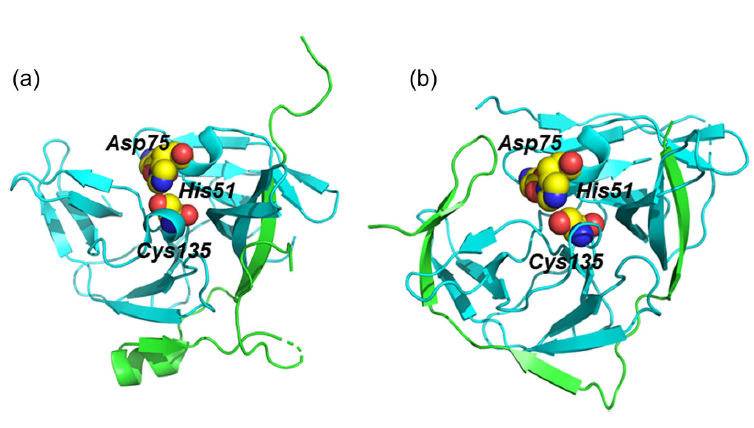
To assess the effectiveness of these molecules in inhibiting the NS2B/NS3 protease, the researchers employed a metric called IC50, representing the "half-maximal inhibitory concentration." This metric gauges how effectively a molecule can inhibit the protease. Further analysis of these molecules' inhibition mechanisms revealed that ABT263 and ABT737 competitively inhibited the protease by binding to the same site as the target substrate. In contrast, AT101 and TW37 were identified as non-competitive inhibitors, binding to a different site and inducing changes in the enzyme's structure or activity.
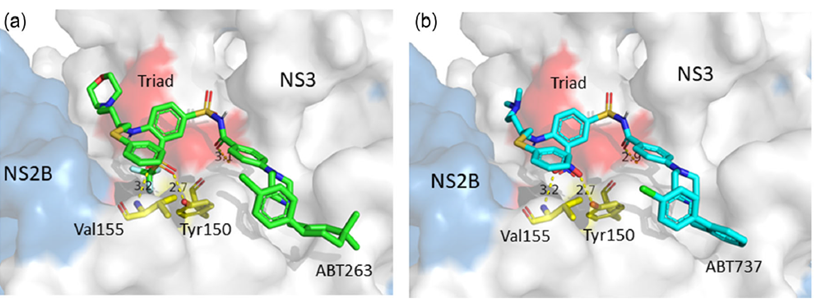
The study suggests that the identified inhibitors have the potential to be developed into specific anti-dengue therapeutics. This is a promising avenue for further research and development, as these molecules have already undergone testing for their safety and pharmacological properties as anticancer drugs. With the aim of preventing tragic incidents like the loss of school-age children to dengue in the Philippines, this research provides hope for improved treatments and enhanced protection against this mosquito-borne disease.
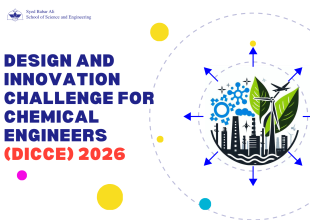
The Department of Chemistry and Chemical Engineering at LUMS is proud to launch the third edition of the Design and Innovation Challenge for Chemical Engineers (DICCE) — a national-level competition designed to empower final-year chemical engineering students across Pakistan.
DICCE challenges students to apply their classroom knowledge to real-world industrial problems through creative, practical, and forward-looking process design. Building on the success of DICCE 2024 and DICCE 2025, this year’s theme centers on industrial innovation and sustainability, encouraging exploration of emerging technologies and climate-relevant engineering solutions.
Who Can Participate
• Final-year undergraduate chemical engineering students from universities across Pakistan
• Teams of up to five students per university, registered through a faculty advisor
How It Works
Each team will have five months to work on a design problem released in September 2025, with support from their advisors. Submissions will be judged by a panel of experts from academia and industry. The winning team will receive a PKR 100,000 cash prize and national recognition, while all participants and faculty advisors will receive certificates.
Important Dates
• Registration Deadline: July 31, 2025
• Competition Launch: September 2, 2025 (problem statement will be emailed to advisors)
• Design Submission Due: February 27, 2026
• On-Campus Poster Presentation & Award Ceremony: April 2026 (date TBA)
Register Here: Link
• Fee: PKR 5,000 per team (non-refundable)
• Each university may register one team only
This is a unique opportunity for students to gain hands-on design experience, connect with peers and professionals, and demonstrate their potential to the academic and industrial community. DICCE projects may also be continued as final-year design projects within home institutions.
For inquiries, please contact: dicce@lums.edu.pk
The Department of Chemistry and Chemical Engineering at LUMS is proud to launch the third edition of the…
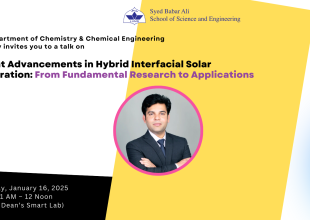
Water is essential to life and progress. The World Health Organization reports that 3.2 billion people worldwide face water scarcity, while >420 billion m3 of wastewater is released into rivers, lakes, and oceans annually, contaminating 5.5 trillion m3 of freshwater. Therefore, based on the concept of seawater desalination, the current emerging solar water purification technology primarily employs clean renewable solar as the primary energy input channel and uses interfacial photothermal conversion materials to separate water and impurities via evaporation, which has the benefits of low energy loss and excellent efficiency when compared with other water purification technologies. Hybrid Interfacial Solar Evaporation presents a promising solution to address the pressing challenges of interfacial evaporation technology e.g. fundamental, and operational issues. By leveraging the principles of interfacial engineering, this technology optimizes the conversion of solar radiation into thermal energy for water evaporation, waste heat recovery into thermoelectricity, and photothermal-induced water splitting, as illustrated in Figure 1. From fundamental studies elucidating the underlying mechanisms to scalable prototypes tailored for real-world implementation, this holistic approach offers a pathway toward sustainable water desalination, energy generation, and fuel production2-5. As we navigate toward a more sustainable future, hybrid interfacial solar evaporation stands as a beacon of hope, bridging the gap between scientific inquiry and tangible solutions to global challenges.
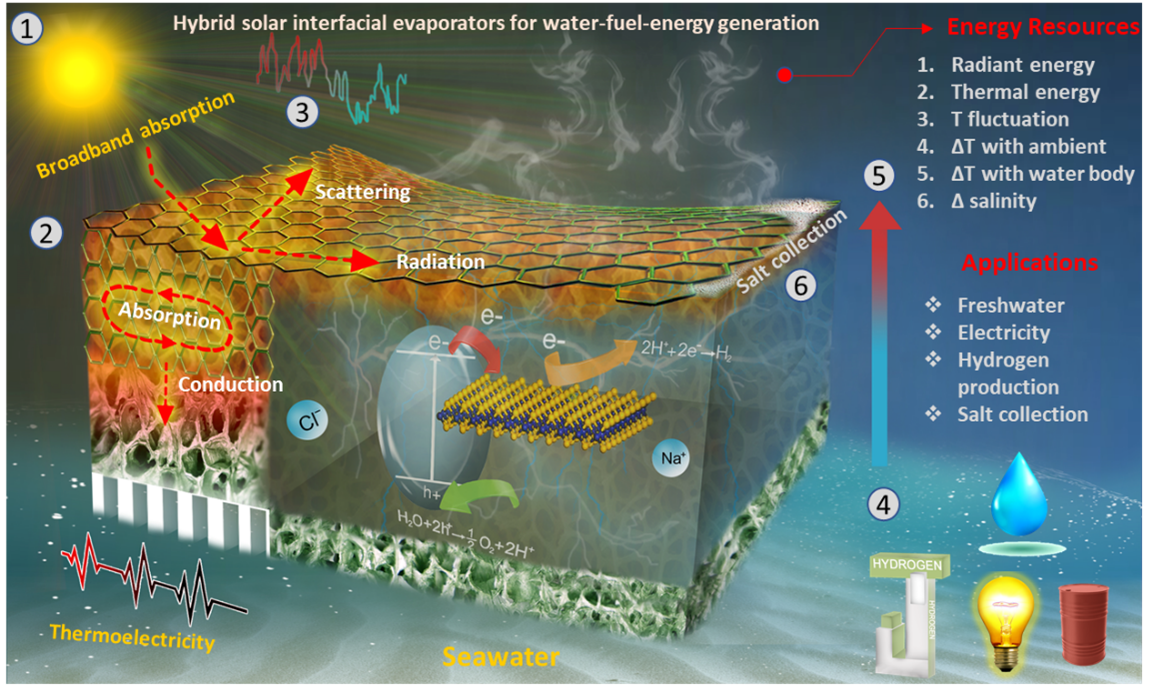
Keywords: Solar energy; Hybrid; Interfacial evaporation; Water-fuel-energy-crisis
References:
1. Irshad, Muhammad Sultan, et al. "Advances of 2D‐Enabled Photothermal Materials in Hybrid Solar‐Driven Interfacial Evaporation Systems toward Water‐Fuel‐Energy Crisis." Advanced Functional Materials 33.51 (2023): 2304936.
2. Arshad, N., Irshad, M.S. et al. Exploring perovskite oxide for advancing salt-resistant photothermal membranes and reliable thermoelectric generators. Chem. Eng. J. 475, 146200 (2023).
Water is essential to life and progress.
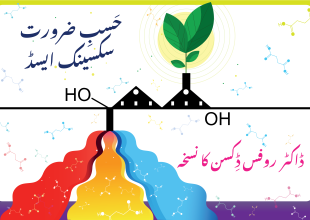
کیا آپ کسی ایسے کیمیائی مادے کو جانتے ہیں جو گھریلو ٹوٹکوں سے لے کر سائنسی تجربہ گاہ تک میں استعمال ہوتا ہو؟ قدرت کے اِس کارآمد کیمیائی نگینے کو سکسینک ایسڈ کے نام سے جانا جاتا ہے۔ یہ ایک ایسا سفید قلمی نامیاتی تیزاب ہے جسے اکثر اشیائے خوردونوش کی تیاری اور دواسازی میں بھی استعمال کیا جاتا ہے۔ صنعتی سطح پر سکسینک ایسڈ کو کیمیائی طور طریقوں سے تو بنایا جا ہی رہا ہے مگر پیداوار کا یہ روایتی طریقہ مہنگے خام مال اور ماحول دشمن نتائج کی وجہ سے زیادہ کارگزار نہیں۔ کیا ہی اچھا ہو کہ اِس اہم کیمیائی مرکب کی پیداوار کا ذمہ حیاتیاتی طرزِعمل کو سونپ دیا جائے! شعبۂ کیمیا اور کیمیائی انجنئیرنگ کے ڈاکٹر روفس ڈِکسن کی تحقیق اسی مرکزی خیال کو عملی جامہ پہنانے کی ایک با معنی کوشش ہے۔
ڈاکٹر ڈِکسن کا تحقیقی مقالہ حال ہی میں ایک نامور سائنسی جریدے Energy and Environmental Science میں شائع ہوا ہے۔ اِن کی تحقیق میں سکسینک ایسڈ کو سستے، موثر اور ماحول دوست طریقوں سے بنانے کی تجویز دی گئی۔ دراصل ڈاکٹر ڈِکسن کی تحقیق ۵ اہم سوالات کے جواب تلاش کرتی ہے:
۱۔ سکسینک ایسڈ کی پیداوار میں کون سا خام مال استعمال ہونا چاہیے؟
۲- پیداوار کو مزید سستا کرنے کے لیے کون کون سی فنیات و صنعتیاتی ترکیبیں استعمال کی جا سکتی ہیں؟
۳- پیداوار سے جڑے معاشی اور ماحولیاتی اثرات کیا ہوں گے؟
۴- اس پورے عمل کو سرمایہ کار کے لیے معاشی طور پر پُرکشش کرنے میں کونسے عناصر اہمیت کے حامِل ہیں؟
۵- سکسینک ایسڈ کی پیداوار میں کون سے معاشی مسائل قابلِ نظر ہیں؟
ان سوالات کو سلجھانے کے لیے ایک ایسی سیمولیشن تیّار کی گئی ہے جِس میں صرف ایسے خاکوں پر نظرثانی کی گئی جو معاشی طور پر استحکام فراہم کر سکیں۔ “مونٹیکارلو” قِسم کی سیمولیشن کے ذریعے ہر ممکن حل کے جوکھم کا تخمینہ بھی لگایا گیا۔ ایک پیچیدہ ریاضیاتی ماڈل کے ذریعے ۸۵ ہزار سے زائد متغیر عناصر اور ۳۵ ہزار سے زائد پابندیاں لگائی گئیں، گویا سکسینک ایسڈ کی حیاتیاتی طرزِعمل کے ذریعے پیداوار کو مختلف زاویوں سے مستحکم اور قابلِ عمل بنانے کی کوشش کی گئی۔ معلوم ہوا کہ سکسینک ایسڈ کو بڑے پیمانے پر بنانے کے لیے گلیسرول سے اخذ کردہ طریقہ سب سے موثر ہے، جس کی سالانہ لاگت ۱۳.۵ کروڑ ڈالر ہوگی۔
کسی بھی سرمایہ کار کے لیے نقصان سے بچاؤ اُس کی پہلی ترجیح ہوتی ہے۔ چنانچہ اِس پوری کاوِش کو صنعتی اعتبار سے کارآمد بنانا ڈاکٹر ڈِکسن کی بھی اوّلین ترجیح رہی ہے تاکہ سکسینک ایسڈ کی بڑے پیمانے پر تیاری کو حقیقی جامہ پہنایا جا سکے اور اِس اہم کیمیائی مرکب کی ماحول دوست اور معاش دوست پیداوار کو یقینی بنایا جا سکے۔ ہم ڈاکٹر ڈِکسن کی اِس قابلِ ستائش کوشش پر اِن کو مبارک باد پیش کرتے ہیں اور امید کرتے ہیں کہ ان کو مستقبِل میں بھی ایسی کامیابیاں ملتی رہیں۔
حوالہ:
Sustainable Bio-Succinic Acid Production: Superstructure Optimization, Techno-Economic, and Lifecycle Assessment Energy & Environmental Science, Apr. 2021 doi:10.1039/D0EE03545ADickson, Rofice

کیا آپ کسی ایسے کیمیائی مادے کو جانتے ہیں جو گھریلو ٹوٹکوں سے لے کر سائنسی تجربہ گاہ تک میں استعمال ہوتا ہو؟ قدرت کے اِس کارآمد کیمیائی…

